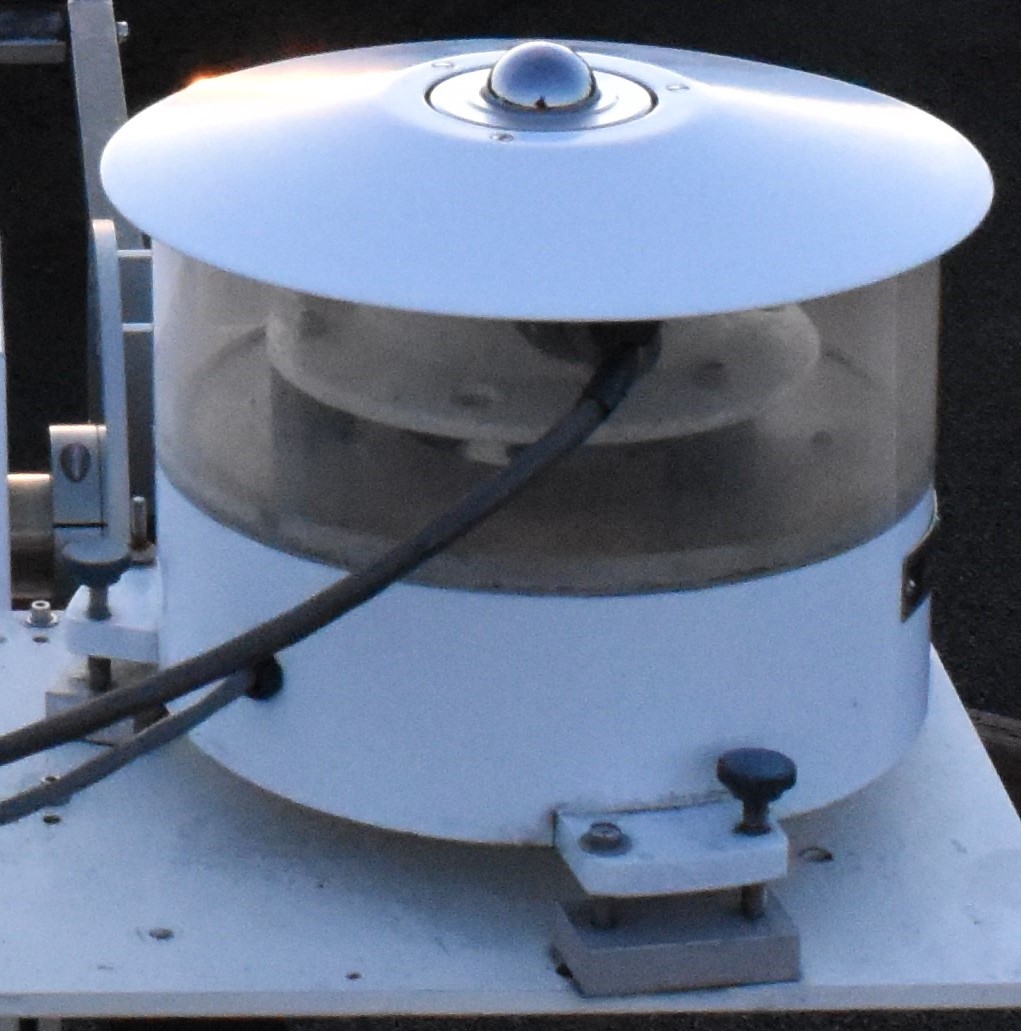Eppley Precision Infrared Radiometer (PIR)
 The Eppley
Precision Infrared Radiometer, or pyrgeometer, is designed for the measurement of downward or
upwelling longwave irradiatance. There is no official ISO/WMO classification of pyrgeometers that
are designed to measure the longwave (infrared) irradiance from the sky. The PIR has the same
wirewound thermopile detector and temperature compensation circuitry as found in the Eppley SPP
pyranometers. The Eppley PIR pyrgeometer has a shield and a body that is similar to the SPP. The
dome is coated to filter the shortwave radiation. This thermopile detector is used to measure the
"net" incident longwave irradiance and a case thermistor is used to determine the outgoing
longwave radiation from the case. A dome thermistor is also included to measure the dome
temperature to adjust for the thermal bias and provide more accurate results.
The Eppley PIR pyrgeometer has a shield and a body that is similar to the Eppley SPP.
The measurements from the PIR include, downward longwave irradiance, sky temperature, case temperature, and dome temperature.
The Eppley
Precision Infrared Radiometer, or pyrgeometer, is designed for the measurement of downward or
upwelling longwave irradiatance. There is no official ISO/WMO classification of pyrgeometers that
are designed to measure the longwave (infrared) irradiance from the sky. The PIR has the same
wirewound thermopile detector and temperature compensation circuitry as found in the Eppley SPP
pyranometers. The Eppley PIR pyrgeometer has a shield and a body that is similar to the SPP. The
dome is coated to filter the shortwave radiation. This thermopile detector is used to measure the
"net" incident longwave irradiance and a case thermistor is used to determine the outgoing
longwave radiation from the case. A dome thermistor is also included to measure the dome
temperature to adjust for the thermal bias and provide more accurate results.
The Eppley PIR pyrgeometer has a shield and a body that is similar to the Eppley SPP.
The measurements from the PIR include, downward longwave irradiance, sky temperature, case temperature, and dome temperature.
Specifications
| • | Sensitivity: approximately 3 µV/Wm-2. |
| • | Spectral Range: approximately 4,000-50,000 namometers. |
| • | Temperature Response: ±.5% over ambient temperature range -30 to +50°C. |
| • | Linearity: ±0.5%-2. |
| • | Response time: 5 second (95%). |
| • | Weight: 7 pounds. |
| • | Orientation: Change in tilt response is less than 0.5%. |
For a PIR, the calibrations are done against the World Infrared Standard Group (WISG) International Practical Temperature Scale (IPTS). Getting an exact value for the downward irradiance is under discussion, although a more precise value is being defined. For now, these values are to be considered a best estimate.
© 2022, UO Solar Radiation Monitoring Laboratory.
|
Top of page Site map Solar data Instruments Publications |
Home page Search About our data Software tools |
Sponsors Contact us Monitoring stations Educational material |
Home page URL: solardata.uoregon.edu
